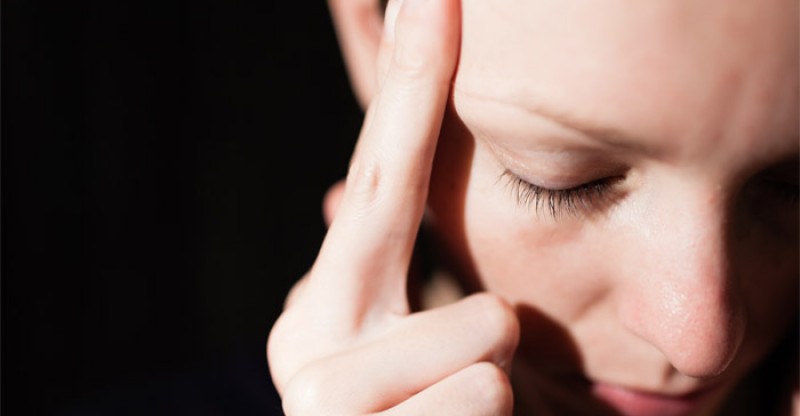Home Remedies for Ear Infection (10 Proven Strategies)
Ear infections can be caused by a few different issues but are basically the result of a virus or bacteria found in the middle ear.
While adults can end up with an ear infection, they are generally more prevalent in children.
There are a number of causes and factors that can contribute to ear infections, such as a buildup of wax, food allergies, fetal alcohol syndrome, environmental allergies, upper respiratory infections and nutritional deficiencies.
Internal injuries and genetics can also play a role in experiencing ear infections.
There are a few signs that a person may be suffering from an ear infection, and they are especially important when the patient is a baby and cannot explain the pain.
The signs are commonly: tugging on the ear, fluids draining out of the ear, headache, high fever, nausea and vomiting, poor sleep habits, and especially sharp pains within the ear canal.
There are three parts of the ear: outer, middle and inner.
Each one has a specific function that allows a person to hear.
Ear Structure
Outer Ear
The pinna is a section found in the outer ear that is shaped like a leaf.
This is the part responsible for capturing the sound waves that travel towards the ear.
The sound waves enter through the pinna into the ear canal, where they reach the eardrum, located within the middle ear.
Middle Ear
There are many other ear organs present in the middle part of the ear, as well.
These are the anvil, stir up, middle canal, hammer, and semicircular.
Inner Ear
The inner ear holds three main parts: the Eustachian tube, cochlea and nerves.
When the sound waves from the canal hit the nerves, the brain can then process the sound that you hear.
From there you can recognize what you are hearing and understand it.
Home Remedies for Ear Infection
You can suffer from an ear infection in any area of the ear, but an ear infection in the inner ear is the most serious.
Treating the ear infection as soon as possible is important in that it can prevent further complications from occurring, such as damaged or ruptured ear drums.
There are quite a few home remedies for ear infection problems that can alleviate the pain and irritation quickly and cheaply.
If you have asked the question “How to get rid of an ear infection”, this article is for you.
The following are 10 tried-and-true home remedies for an ear infection.
Garlic
When you are looking for an ear infection remedy that works and is easy, the use of garlic is one to try.
Since garlic has many natural pain relieving and antimicrobial properties, it works very well as a home treatment for ear infections.
Just take two garlic cloves and cook them with either two tablespoons of mustard oil or sesame oil until the mixture turns black.
Strain and wait for the solution to become cooler.
When it is still warm, use 2-4 drops in the ears.
Boiling two to three fresh cloves of garlic in straight water for five minutes and crushing them up can also work as a solution.
Add a little bit of salt, pour the mixture into a clean cloth and press it against the affected ear.
Salt
Everyone has salt in their home, so when you are searching for home remedies for ear infection solutions, try this quick fix.
Heat up one cup of salt on the stove or in the microwave.
Dump the salt onto a cloth and seal it with a rubber band or a knot.
When it is bearably hot, apply the cloth to the ear that is affected for at least five to ten minutes.
This remedy can be repeated as many times per day as necessary.
The heat from the cloth helps to draw out fluid, relieve pain and reduce swelling.
Another method is rice, which can be prepared and administered the same way.
Basil
Holy basil leaves can also be used to treat minor ear infections and ear aches.
Take four or five fresh holy basil leaves and gently crush them to extract the juice.
Use the juice to apply either on or around the ear that hurts, being careful not to get the juice into the ear canal.
Another solution is to mix up a couple of drops of the holy basil oil with coconut oil in equal parts.
Using a cotton ball to soak up the mixture, gently wipe the inside of your ear with the cotton ball, as well as the outer edges and behind the ear.
This can be repeated daily.
Olive Oil
Ear infections are typically caused by a fungal or bacterial growth in the earwax, which can then lead to the Eustachian tubes becoming blocked.
Olive oil can easily clear this blockage.
Simply warm up some olive oil and add a couple of drops to the affected ear, which in turn causes the wax to soften.
The infected wax can then be removed carefully with cotton-tipped swabs.
Do not push the swab too hard into the eardrum as this could damage it.
Mustard oil can also be used in place of olive oil.
Apple Cider Vinegar
Apple cider vinegar is a good choice when you are wondering how to get rid of an ear infection with household products.
Soak one part apple cider vinegar together with the same amount of either water or alcohol.
Using a cotton ball, soak up the mixture and place it into your ear like a plug.
Leave it for around five minutes and then remove.
Lie down to drain any excess and use a hair dryer to dry out your ear if need be.
Apple cider vinegar can also be gargled if you believe the infection is in your Eustachian tubes.
If you do not have apple cider vinegar on hand, try the same solution with white vinegar.
Breast Milk
There are natural antibodies in breast milk that will help get rid of an ear infection by speeding up the healing process.
Breast milk can help the swelling go down and alleviate discomfort from an ear infection in just a day or two for both adults and children.
Use a dropper to apply the milk to the ear a couple of drops at a time.
This can be done every few hours during the day.
It is also useful for eye infections, minor burns and minor cuts.
Warm Water Bottle
Heat can help alleviate the pain and discomfort of an ear infection.
Use a warm water bottle or warm compress against the affected ear.
To use a compress, soak a clean washcloth in warm to hot water, ring out and place against the ear.
Start for five minutes at a time and repeat as much as necessary.
A heating pad may also be used in place of a bottle or washcloth.
Tea Tree Oil
Tea tree oil has antibacterial properties that can help anyone get relief from the pain of an infected ear.
You will need three drops of the tea tree oil, one teaspoon of colloidal silver, one teaspoon of apple cider vinegar and two tablespoons of olive oil.
Mix together and warm up to form a solution.
Lie down on a towel to begin.
Fill a dropper with the solution and fill up your ear.
Sit for five minutes and then drain onto the towel completely.
You can use this remedy for two days, 2-3 times per day.
Onions
Most people have onions in their home, which can be a great treatment for an ear infection.
Take one small onion and microwave it in a bowl for a couple of minutes.
After it cools, strain the onion juice from it.
You can then add two to three drops of this juice into the ear that is affected.
Leave it in for a bit and then turn your head in order to drain the juice.
Another remedy is baking the onion for about half an hour first.
Take the baked onion and cut it up into halves.
Take one-half, place it onto a thick cloth and then place this cloth over the ear that hurts.
After 10 minutes, use the other half of the onion for maximum results.
Mango Leaf Juice
Using mango leaves as a remedy for an ear infection can help the pain and irritation go down.
To make the juice, take two or three soft mango leaves and crush them up, then warm them slightly.
A dropper can then be used to apply the juice into the ear that hurts.
It usually takes a couple of minutes but the juice is a great ear infection remedy.
You can repeat this fix 2-3 times per day for the most relief.
Conclusion
Leaving an ear infection untreated can lead to repeat occurrences and even deafness in severe cases.
Consulting a doctor concerning an ear infection is always recommended, but you can first try some natural remedies at home to get immediate relief.
FDA Compliance
The information on this website has not been evaluated by the Food & Drug Administration or any other medical body. We do not aim to diagnose, treat, cure or prevent any illness or disease. Information is shared for educational purposes only. You must consult your doctor before acting on any content on this website, especially if you are pregnant, nursing, taking medication, or have a medical condition.
HOW WOULD YOU RATE THIS ARTICLE?





